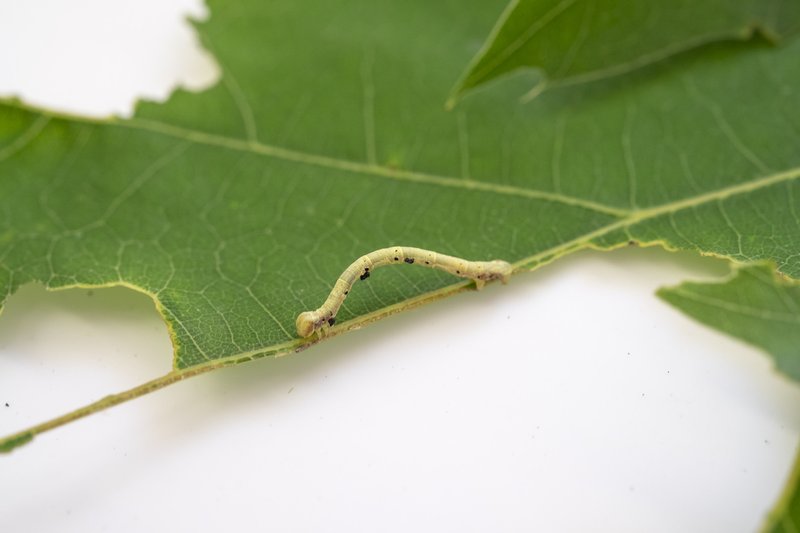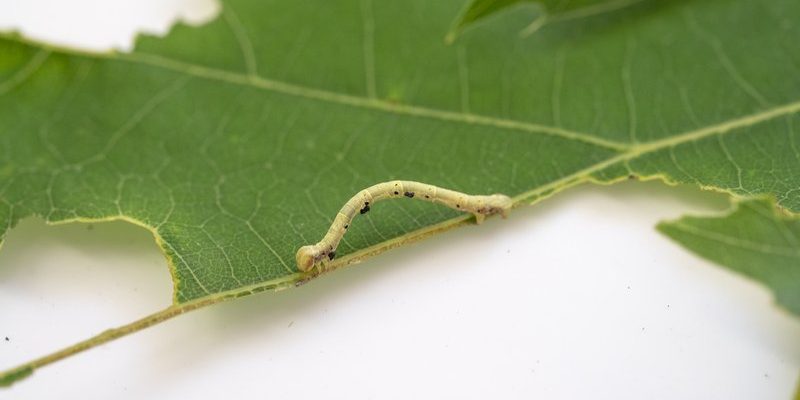
So, what does inchworm damage look like? It’s not always obvious, especially if you’re not familiar with these critters, which can sometimes blend in with the tree bark or foliage. Here are some key points: Inchworms are typically green or brown, and they move in a distinctive looping motion. This can give them a sneaky edge! Early detection can save you a ton of stress, not to mention the effort and cost of dealing with a tree in distress.
In this article, we’ll dig into how to spot signs of inchworm damage, what they do, and what you can do to address the situation. Let’s roll up our sleeves and get into the nitty-gritty!
Recognizing Inchworms
To identify inchworms, it helps to know what they actually look like. As tiny caterpillars, they can vary in color and size, but most are slender and elongated. Typically, they are about one to two inches long, so they might not catch your eye right away. You might be wondering, “Why should I care about these little guys?” Well, they can cause significant damage to your trees if you don’t act fast.
Inchworms have a unique movement pattern: they arch their bodies as they crawl, which makes them look like they’re measuring something (hence the name). You’ll often find them on the leaves, where they feed on vegetation, munching away on edges until they look ragged. If you’re not careful, they can devour whole leaves and impact the overall health of the tree. If you’re curious about what to look for, pay attention to any unusual loops of leaves or even missing foliage.
Keep an eye out for these telltale signs of inchworm presence. If you spot them early, you can prevent them from inflicting more harm. Think of them as uninvited guests who can cause a ruckus if you don’t keep tabs on them!
Signs of Inchworm Damage
Now that you know what inchworms look like, let’s dive deeper into the signs of damage they may cause. You might notice your tree’s leaves looking like they’ve been through a shredder. This is one of the clearest indicators! If you can see irregular holes or chewed edges on the leaves, it could mean that inchworms are at work.
Interestingly, their feeding patterns tend to favor the youngest, most tender leaves first. These are like dessert for inchworms, and they’ll go for them more than the tougher, older leaves. If you see a lot of younger leaves missing, that’s a big red flag! Additionally, you might find silk threads hanging between branches, which inchworms use to travel. Think of it like their personal zip line.
If you’re seeing all these signs, it could mean that your tree is under siege! The longer you wait, the more damage they’ll cause. Addressing the issue sooner rather than later can result in a healthier tree and a happier garden.
Assessing the Severity of Damage
So, you’ve spotted some signs—what’s next? It’s time to assess how serious your situation is. Take a closer look at your tree. Is it just a few leaves that are affected, or is there more widespread damage? Different trees respond differently to inchworm activity, and some can tolerate a bit more damage than others.
For example, shade trees like oaks might bounce back well after losing some leaves during early summer but can still suffer if the infestation is extensive. On the other hand, younger trees or those already under stress may struggle to recover if they lose too many leaves. Think of your tree like a hero in a movie; if it’s already worn down, it may need special attention to overcome the villain (in this case, the inchworms).
When checking for damage, be sure to look at the overall health of the tree. Are the branches still sturdy, or do they seem weak or brittle? If you’re noticing a lot of bare branches or wilted leaves, then it’s time to take action. Your assessment will guide you on how best to proceed.
Preventing Inchworm Infestations
Prevention is the best medicine when it comes to inchworm damage. One effective way to keep these pesky critters at bay is by fostering a healthy environment for your trees. Make sure your trees are well-nourished, as a strong tree can withstand minor infestations better. Regular watering, proper soil aeration, and fertilization can enhance overall tree health.
Another preventative measure is to maintain proper tree spacing. Trees that are crowded together can create a humid microenvironment that inchworms love. Don’t hesitate to trim back overgrown branches to allow for better airflow and sunlight. As a bonus, this can also improve the look of your yard!
You can also keep an eye out for signs of other pests or diseases that can weaken your trees. If you notice issues, addressing them quickly can help your trees stay robust and better able to fight off inchworm damage before it starts.
How to Treat Inchworm Damage
If you discover that your tree is indeed facing an inchworm invasion, don’t panic! There are several strategies you can take to treat the damage effectively. One of the simplest ways is to *manually remove the worms*. This might sound tedious, but it can be quite effective. Just wear gloves and pick them off the leaves you can see.
For a more widespread attack, you might consider using insecticidal soap or horticultural oil. These options can help control the population without harming beneficial insects. Just make sure to follow the instructions carefully. You don’t want to accidentally hurt other critters that help your garden!
If the situation is pretty severe, consulting a professional arborist might be the best course of action. They have the expertise to assess the situation and recommend appropriate treatments. Just think of them as your tree’s personal doctor. Investing in their services can save you headaches down the line!
Monitoring Your Trees After Treatment
After you’ve treated your tree for inchworm damage, it’s important to monitor its recovery. Regularly check the leaves for any signs of new activity. If you see any inchworms creeping back in, you’ll want to act quickly.
Also, keep an eye on the overall health of your tree. Are the new leaves coming in strong and healthy? Or are they looking limp and dull? Healthy growth is a good sign that your treatment was successful. Don’t forget to provide your tree with continued care, like regular watering and feeding, to support its recovery process.
Let’s be real: nurturing a tree is a long-term commitment. But with the right attention and care, you can ensure your trees thrive for many seasons to come.
As you move forward with your tree care, just remember: early detection is key. With a little vigilance and proactive care, you can keep those inchworms away and your trees happy and healthy. Now, go forth and be the guardian of your green friends!

